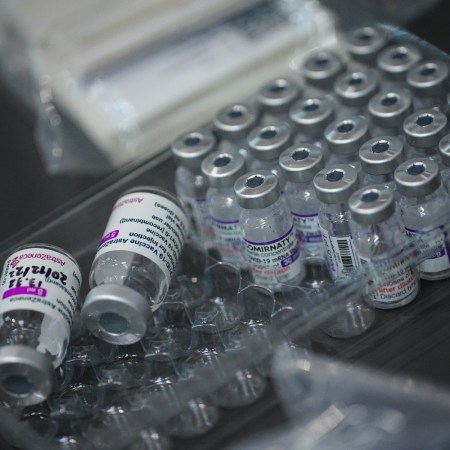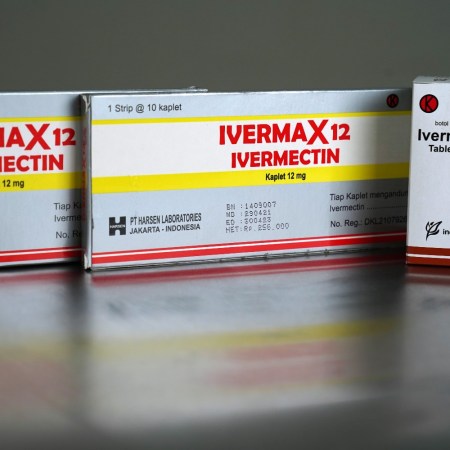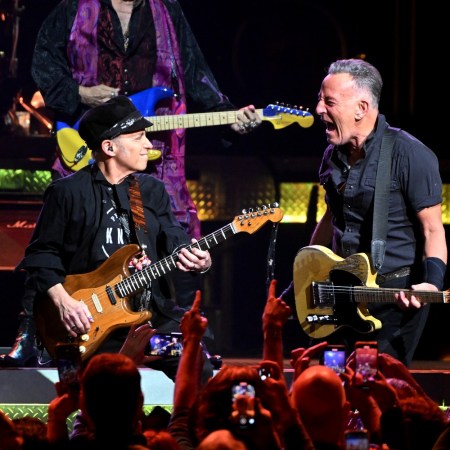If you’ve watched SNL recently, you’d know that during the “goodnights” — when the host waves goodbye and hugs the musical guest — everyone on stage is wearing a mask. It’s a perfect encapsulation of the bizarre in-between we’re at right now with face coverings.
Consider: All of Studio 8H is vaccinated. Most are likely boosted, too. The cast has just acted together without masks for an hour; in some skits, they’re even kissing each other on the mouth. So what’s going on here? What’s with the masks? Is SNL just trying to encourage general public health awareness? Or have we eclipsed a solid-enough point on COVID that the practice is just performative? Broadly, societally speaking, how much longer do we have to do this?
According to experts who recently sat down with The New York Times, “the time has not yet come” to declare ourselves done with masks. As 85% of American counties are still averaging 50 new cases per 100,000 residents, the CDC recommends that even fully-vaccinated people wear masks in public spaces, in an effort to reduce the transmission of the virus.
For those who’ve resolved to live their lives normally again — going to see family and friends, going to work, going to the gym — masks represent the last vestige of a dreadful two-ish years we’re all eager to forget. For some, unfortunately, they’re still a political rallying cry. But for many of us, they’re just a pesky piece of cloth we could do without. Having one handy for the train or pharmacy is another thing to remember when walking out the door.
But irritating as it may be, epidemiologists maintain that “mask-wearing is one of the interventions that you probably want to relax last.” It’s a low-cost, highly effective solution, which can hold the country over until cases drop and vaccine eligibility expands to children of all ages.
Dropping mask mandates actually isn’t that political; Florida’s already done it (of course) in its schools, but New York City, Los Angeles, New Jersey and Washington D.C. have all announced plans to loosen indoor masking requirements over the new few months. Don’t be surprised if communities throughout the States ease requirements on a rolling basis — high schools, then elementary schools, then public places (town halls, libraries, etc.) where senior citizens are likely to gather.
That timeline could take us through February, infectious disease modelers suggest, so don’t expect a COVID-free 2022. There are still 1,000 Americans dying a day from COVID-19, and the country will pass the harrowing 800,000 mark in late December. This is still a story in our lives, no matter how much we wish it weren’t, and it’s likely that places with crowded quarters (public transport, especially) will encourage mask-wearing for a long time.
There is a clear level of cognitive dissonance in our day-to-day life, similar to SNL‘s mask-on/mask-off display. For instance, you might ride the subway next to a family while wearing masks, then eat dinner next to them a half hour later while not wearing masks. But the ultimate, unsatisfying answer, is that this is all a patchwork at this point. Industries are trying to get back on their feet, and public health officials are trying to get face coverings on people wherever and whenever they can.
On top of all this, there is an argument for masks to never go away. It sounds crazy, but they’re just really good at blocking projectile transmission. They can keep us safe from more respiratory droplets than just COVID-19 in the future, while protecting against all sorts of other pollutants in the air. (You can read more about that here.) For those who are horrified by that concept, know this — you just have to last another six months or so before you can stuff your mask in a drawer. You’re close. We’re all close. Hold on through this winter. It’ll keep you warm on your way to the train or pharmacy, anyway.
Thanks for reading InsideHook. Sign up for our daily newsletter and be in the know.


















